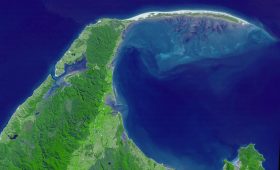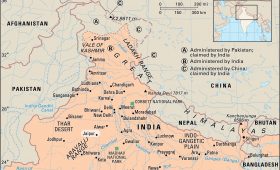Fazao-Malfakassa National Park is the largest national park in Togo, located between the Kara and Centrale Regions. This semi-mountainous wetland area forms part of the border with Ghana, offering a unique blend of landscapes and biodiversity.
History
Established in 1975, Fazao-Malfakassa National Park was created by merging two reserve forests: Fazao and Malfakassa. The park spans approximately 1,920 square kilometers. From 1990 to 2015, the park was managed by the Fondation Franz Weber under a government agreement. It is currently on UNESCO’s World Heritage Tentative List, recognized for its potential “outstanding universal value” in both cultural and natural categories.
Environment
The park’s diverse terrain includes savanna woodland, gallery forests, submontane forests, and grass-covered hilltops. The Forest Classée Du Fazao is particularly rich in biodiversity, while the Malfakassa Zone de Chasse offers rocky hills ideal for hiking. Visitors can explore waterfalls, cliffs, and rocky hills, immersing themselves in the park’s wild beauty.
Fauna
Fazao-Malfakassa is a haven for bird enthusiasts, with 244 known bird species as of 2008. It is designated as an Important Bird Area by BirdLife International. The park is home to various antelope species, including bushbuck, Maxwell’s duiker, and Buffon’s kob. Other wildlife includes baboons, chimpanzees, and, though rare, lions and elephants. However, due to past poaching, elephant populations have dwindled, with estimates of around 50 remaining in the park.
Elephants
Once common in northeastern Togo, elephants have faced significant threats from poaching, especially during the political upheaval of the early 1990s. The park is part of the CITES Monitoring of Illegal Killing of Elephants Program, highlighting ongoing conservation efforts.
Getting to Fazao-Malfakassa National Park
Located approximately 330 km north of Lomé, the park is accessible by a seven-hour bus ride. While the journey can be long, it offers a glimpse into the diverse landscapes of Togo. Hiring a local guide is recommended for navigating the park’s terrain and enhancing your experience.
Exploring the Park
Fazao-Malfakassa National Park covers over 1,920 square kilometers, offering a rich tapestry of flora and fauna. The park’s mountainous regions provide stunning panoramic views, making it a rewarding destination for hikers and nature lovers.
Wildlife
The park supports a variety of wildlife, including elephants, antelopes, and monkeys. Birdwatchers will appreciate the diverse avian population. While sightings of the endangered West African lion are rare, the park remains a crucial area for conservation efforts.
Local Culture
Surrounding the park are traditional villages where visitors can engage with local communities. Experience the warmth of Togolese hospitality, sample local cuisine, and learn about traditional dances and customs.
Best Time to Visit
The dry season, from November to March, is the ideal time to visit, offering pleasant weather and increased wildlife visibility. However, visiting during the shoulder seasons of October or April can provide a quieter experience.
Accommodation and Facilities
While the park itself lacks accommodation, nearby Kara offers a range of hotels and guesthouses. For a more immersive experience, camping within the park is possible with the appropriate permits. Visitors should bring their own camping gear and supplies, as facilities are limited.



